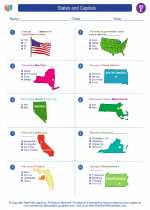Discrimination
Discrimination refers to the unfair treatment of individuals or groups based on certain characteristics such as race, gender, age, religion, or disability. This unjust treatment can occur in various settings, including the workplace, schools, public services, and social interactions.
Types of Discrimination
- Racial Discrimination: Treating individuals differently based on their race or ethnicity.
- Gender Discrimination: Unfair treatment of individuals based on their gender or sexual orientation.
- Age Discrimination: Discriminating against individuals due to their age, particularly in employment or educational opportunities.
- Religious Discrimination: Unjust treatment of individuals based on their religious beliefs or practices.
- Disability Discrimination: Treating individuals with disabilities unfairly, including inaccessibility and lack of accommodations.
Effects of Discrimination
Discrimination can have significant negative impacts on individuals and communities, including psychological distress, limited opportunities, and social exclusion. It can also perpetuate inequality and hinder social progress.
Ways to Combat Discrimination
- Promoting Awareness: Educating others about the harmful effects of discrimination and promoting inclusivity.
- Legislation and Policies: Enacting and enforcing laws and policies that protect individuals from discrimination.
- Advocacy and Support: Supporting individuals who have experienced discrimination and advocating for their rights.
- Promoting Diversity: Celebrating and embracing diversity in all aspects of society.
Study Guide
Here are some key points to remember when studying discrimination:
- Define discrimination and identify its various forms.
- Understand the historical and contemporary examples of discrimination.
- Examine the impacts of discrimination on individuals and communities.
- Discuss strategies for combating discrimination and promoting equality.
Remember to consider real-world examples and case studies to deepen your understanding of discrimination and its effects.
.◂Social Studies Worksheets and Study Guides Fifth Grade. States and Capitals
Study Guide States and Capitals
States and Capitals  Worksheet/Answer key
Worksheet/Answer key States and Capitals
States and Capitals  Worksheet/Answer key
Worksheet/Answer key States and Capitals
States and Capitals  Worksheet/Answer key
Worksheet/Answer key States and Capitals
States and Capitals 

 Worksheet/Answer key
Worksheet/Answer key
 Worksheet/Answer key
Worksheet/Answer key
 Worksheet/Answer key
Worksheet/Answer key

The resources above cover the following skills:
Geography: A student should be able to utilize, analyze, and explain information about the human and physical features of places and regions. A student who meets the content standard should:
Understand that a region is a distinct area defined by one or more cultural or physical features.